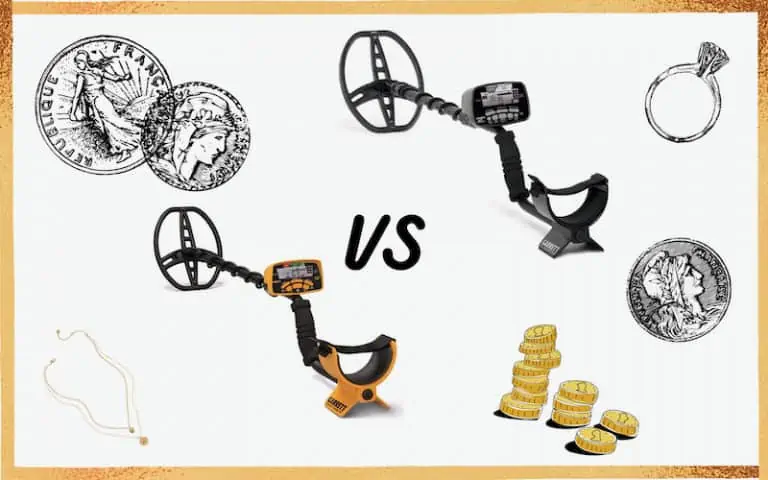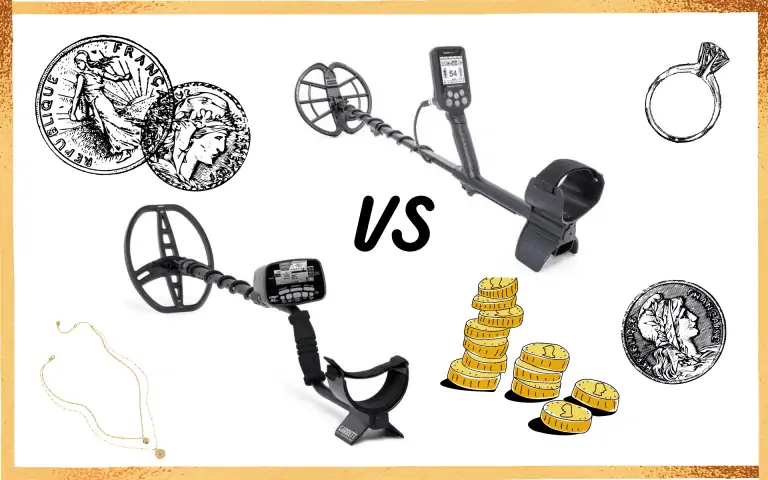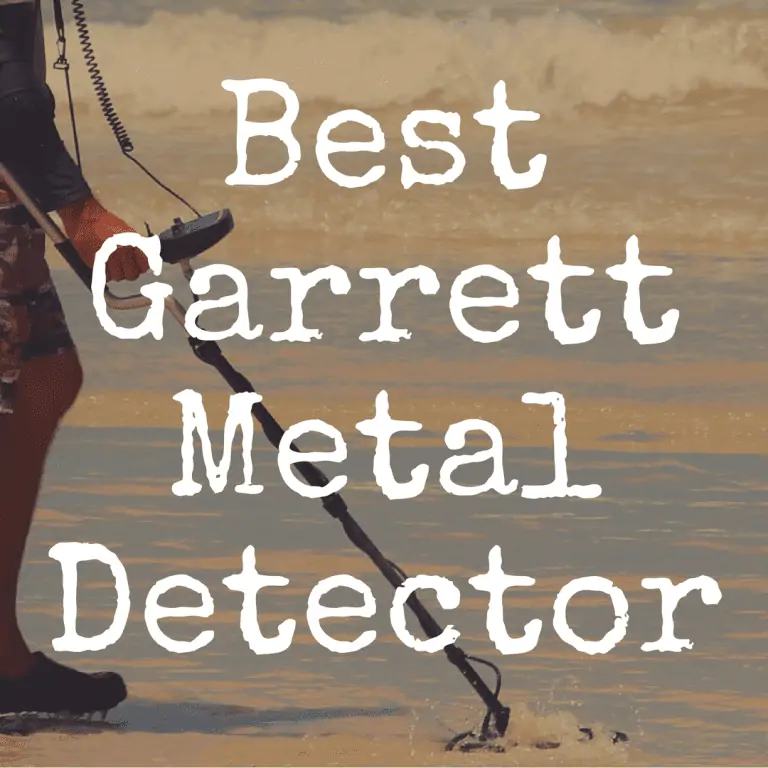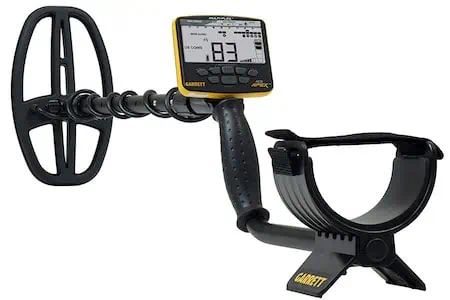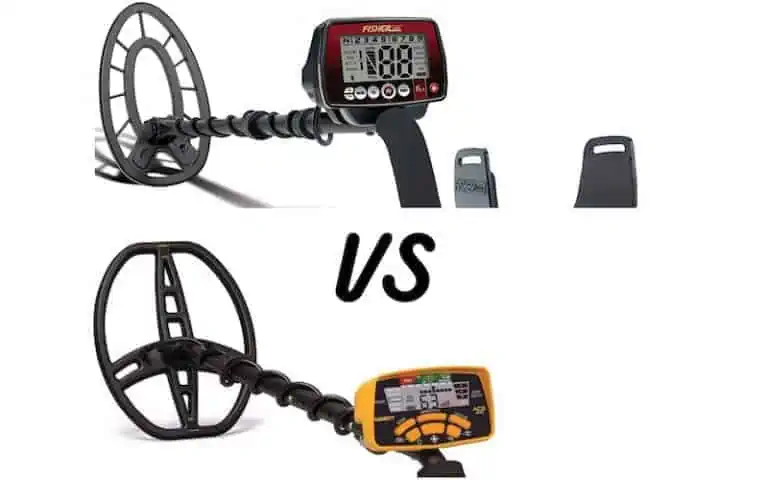Garrett Ace Apex vs Garrett AT Max
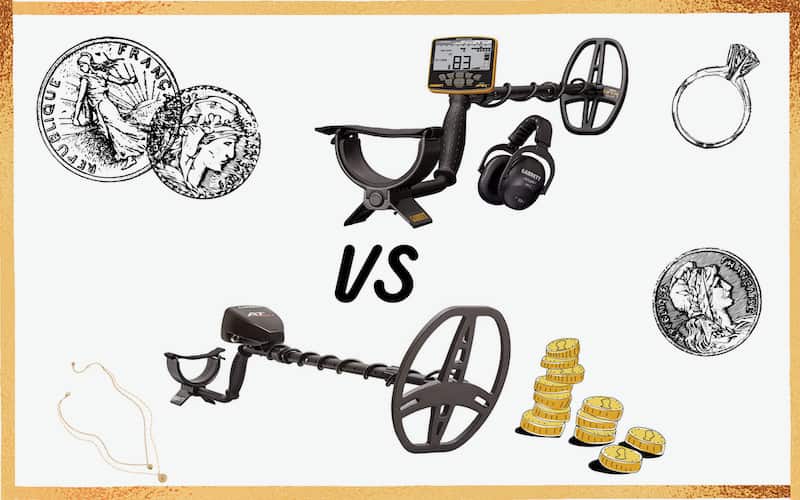
When searching for a new metal detector, it can be very overwhelming. There are so many makes and models on the market these days promising to find you more treasure. So, how do you know which model to choose?
Garrett has been making metal detectors for decades and produce some of the best metal detectors on the market. This article will discuss the Garrett Ace Apex and the Garrett AT Max. We will compare the 2 models and ultimately crown a winner in the battle of Garrett Ace Apex vs Garrett AT Max.
| Photo | Model | Price | Features |
|---|---|---|---|
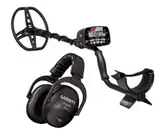 | Garrett AT Max | $$$ | Waterproof to 10 feet |
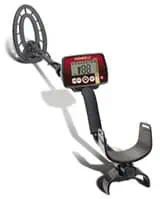 | Fisher F22 | $$ | 9″ Triangulated Concentric Coil |
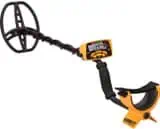 | Garrett Ace 400 | $$$ | 8.5 x 11" DD coil |
 | Minelab Vanquish 540 | $ | Search Modes: Coin, Relic, Jewelry, Custom, All Metal |
Garrett Ace Apex
The Garrett Ace Apex is one of Garrett’s newest metal detectors. This model has some advanced technology, especially considering its price range. The Ace Apex features Garrett’s Multi-Flex technology with broad bandwidth digital platforming. This gives the Ace Apex more versatility. Multi-Flex is Garrett’s multiple frequency operating mode, so this detector has multiple operating frequencies. It can use the frequencies individually, or simultaneously. The Ace Apex’s operating frequencies are:
- 5 kHz
- 10 kHz
- 15 kHz
- 20 kHz
- Multiple Frequency
- Multi-Salt
The lower frequencies on the Ace Apex are great for finding large and highly conductive targets like silver. The higher frequencies are great at finding small and low conductive targets like gold or hammered silver coins.

This model features iron volume. Iron volume lets users decrease the volume of iron targets while keeping the volume of non-ferrous targets remains at a normal level. Some detectorists like this feature because they can hear the iron targets and decide if they want to dig them or not. The Ace Apex has 8 iron volume adjustments.
Garrett’s Ace Apex has a large LCD screen with numerical target identification. It has a 5-tone audio target identification. These tones provide an audible target identification that correlates to the numerical target identification. This model also has a hybrid audio system that gives users the simplicity of binary audio combined with the benefits of proportional audio. This allows you to hear faint targets more easily and clearly.
The Garrett Ace Apex features 6 detection modes plus a pinpoint feature: Zero, Coins, US Coins, Jewelry, Relics, and Custom. The Ace Apex features high resolution ground balancing, which gives users 175 points of ground balance resolution. Ground balancing ranges from ferrous ground to saltwater. This is incredibly helpful in areas with saltwater or high soil mineralization. Saltwater and high soil mineralization can cause metal detectors to give off false signals or even overload. The Ace Apex also features high discrimination and 20 notch discrimination segments and 8 iron discrimination segments.
This model has 8 sensitivity adjustments, 8 depth adjustments, headphone jack, Bluetooth connectivity for use with wireless headphones, iron audio, and comes with a rechargeable battery pack. The Ace Apex is very lightweight at just 2.5 pounds. It also features updatable software. This can be done by downloading updates from Garrett’s website and installing them using your computer.
There are a few options for search coils and headphones available for the Ace Apex. Users can purchase a 6” by 11” Double-D Multi-Flex Viper search coil, this coil plus wireless headphones, an 8.5” by 11” Double-D Flex Raider search coil, or this search coil plus wireless headphones. The price difference among the packages is not great, so it is up to each user which one they choose. Both search coils are waterproof, but the control box is only weatherproof. The detector should never be fully submerged in water, but you can still use it carefully in shallow waters.
So far, this model is a strong contender in Garrett Ace Apex vs Garrett AT Pro!
Garrett AT Max
Garrett’s AT Max is a versatile and popular choice in Garrett’s AT lineup. The AT Max is a single frequency VLF (Very Low Frequency) metal detector. This is a great operating frequency for general treasure hunting. Gold is best found at frequencies above 18 kHz, so this detector may struggle to find small or fine gold but will find larger pieces of gold. While there is only a single frequency on the AT Max, this frequency is adjustable. This means the frequency can be adjusted slightly up or down to compensate for electromagnetic interference or high soil mineralization.
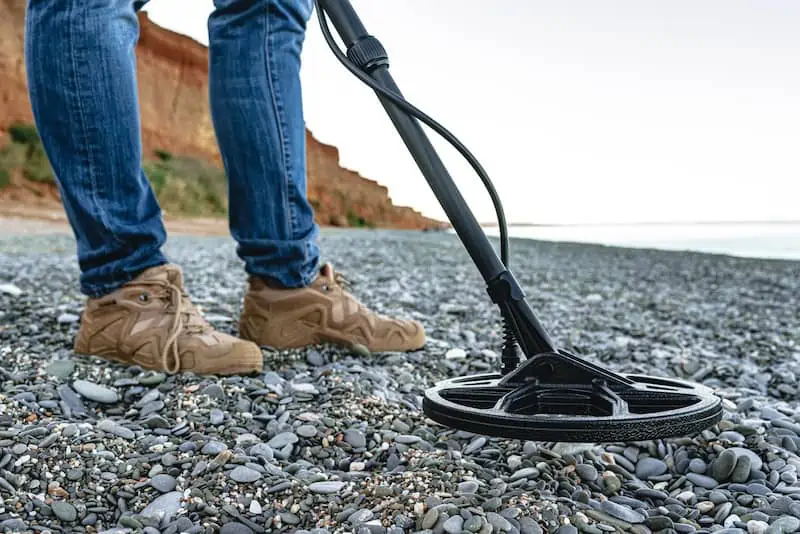
The AT Max features an LCD panel with large numerical target identification. This model has 44 iron discrimination segments which allows users to change which types of targets are detected or ignored. It also features notch discrimination so you can further notch out target types you wish to ignore. The AT Max has an elimination button, which helps if you find a trash target and want the detector to ignore the next target of that type. Simply hold it while hovering over the trash target and it will be eliminated from the search pattern.
The AT Max features Garrett’s proportional pulse width modulation audio. This audio system is often quicker than relying solely on the numerical target identification. It also provides more target information. Iron Audio can be turned on or off to help identify targets easier. Iron targets are filtered by default, so you will not hear them when discrimination is turned on. With Iron Audio, iron targets will give a distinct tone so you can decide whether to dig or leave ethe target.
Garrett’s AT Max also has a great ground balancing system. This is an important feature for metal detectors, especially if you will be detecting in areas with high trash or high soil mineralization. The AT Max has automatic ground balancing, manual ground balancing, and a feature called automatic ground balance window. This model has 4 search modes plus a pinpointing mode: All Metal, Coin, Zero, and Custom. The AT Max comes with an 8.5” by 11” PROformance Double-D search coil. This model weighs about 3 pounds and operates on 4 AA batteries.
I nearly forgot to tell you about my favorite feature on the AT Max! This model is completely waterproof up to 10 feet. This is huge if you want to metal detect in rivers, streams, and shallow lakes. You will no longer have to worry about dropping your metal detector in the water and ruining it. It also comes with Garrett’s MS-3 Z-Lynk wireless headphones.
Garrett Ace Apex vs Garrett AT Max
Both the Ace Apex and AT Max have Garrett’s best and latest technologies incorporated into them. One of the most notable differences is the operating frequencies. The Ace Apex is a multiple frequency metal detector which can operate on 4 individual frequencies ranging from 5 kHz to 20 kHz, multiple frequencies (all frequencies simultaneously), and multiple frequency salt mode.
The AT Max operates at an adjustable 13.6 kHz. The Ace Apex will be much better at finding small gold and fine gold jewelry because of the higher operating frequencies. Anything above 18 kHz is ideal for finding gold. That is not to say the AT Max cannot find gold. It will just struggle to find any small nuggets, fine gold jewelry, or gold flakes.

Another major difference between the Ace Apex and the AT Max is the AT Max is fully waterproof up to 10 feet. The Ace Apex is only water resistant, so the search coil can be submerged, but the control box cannot. This is hugely advantageous for those who want to shallow dive, search rivers, streams, or any other water body.
The AT Max will not do as well in saltwater areas as the Ace Apex. The AT Max does have fantastic ground balancing, so it will be able to mitigate some of the effects of salt on the detector. The Ace Apex, however, has a dedicated salt mode. This mode is already fine-tuned to automatically filter out the effects of saltwater. Saltwater is inherently conductive, so most single frequency metal detectors struggle to differentiate targets from salt interference.
The Ace Apex operates on a built-in rechargeable lithium-ion battery pack, while the AT Max requires 4 AA batteries. Both have Z-Lynk wireless capabilities so they can be used with wireless headphones. Z-Lynk technology is 6 times faster than traditional Bluetooth. The Ace Apex is lighter weight than the AT Max, at 2.5 pounds compared to 3.03 pounds, respectively.
Conclusion
So, is there a clear winner in the battle between Garrett Ace Apex vs Garrett AT Max? This one is almost too close to call. Both have their pros and cons. Both are fantastic metal detectors. Both offer the latest technologies. So, I am calling this one a tie.
The Ace Apex is a fantastic option for anyone looking into a multiple frequency metal detector. It will be the best choice in areas with high salt content and does have a dedicated salt mode. This metal detector can be used in multiple frequency mode or in single frequency mode. This is something that up until recently was only available on metal detectors that cost much more than the Ace Apex. The Ace Apex also have a variety of search coil and headphone packages so you can customize the detector however you see fit.
On the other hand, if you plan to metal detect in shallow waters like rivers, streams, or shallow diving in lakes, the AT Max is the best choice for you. This metal detector is completely submersible up to 10 feet. This gives users a lot more freedom for metal detecting in and around water bodies. The AT Max also has a very sophisticated and efficient ground balancing system that allows it to compensate for soil mineralization and electromagnetic interference.
Both metal detectors are an excellent choice. You really cannot go wrong with one or the other. You will need to choose the one that best suits your specific needs.

FAQ
If you enjoyed this article, please “like” our Facebook page!
You Might Also Want to Read:
